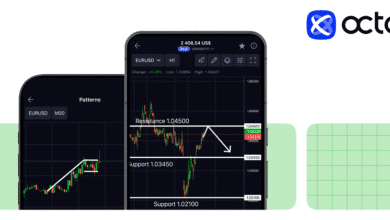
Table of Contents
ToggleUnderstanding Cryptocurrency Mining
What is Cryptocurrency Mining?
The process of verifying transactions and entering them into the blockchain ledger is known as cryptocurrency mining. Miners use powerful computers to solve complex mathematical problems, which, when solved, allow them to add a new block to the blockchain and earn cryptocurrency as a reward.
Key Components of Mining Rigs
- Graphics Processing Units (GPUs): Used for their high computational power, GPUs are a common choice for mining.
- Application-Specific Integrated Circuits (ASICs): Hardware that has been specially engineered with cryptocurrencies in mind.
- Cooling Systems: are essential for maintaining optimal temperatures and preventing hardware from overheating.
Sources of Noise in Crypto Mining
Several factors contribute to the noise generated by crypto mining operations. These factors are primarily related to the hardware used and the cooling requirements.
High-Performance Hardware
GPUs and ASICs
- Operational Intensity: Mining hardware operates at maximum capacity to solve complex problems, generating significant noise due to the high-speed processing.
- Fan Noise: Both GPUs and ASICs are equipped with powerful fans to dissipate heat, which can be quite loud when running at full speed.
Cooling Systems
Air Cooling
- Multiple Fans: Mining rigs often have multiple high-speed fans to ensure adequate airflow. The cumulative noise from these fans can be substantial.
- Fan Speed: As the mining hardware heats up, the fans spin faster, increasing the noise level.
Liquid Cooling
- Pump Noise: Liquid cooling systems use pumps to circulate coolant. While generally quieter than air cooling, the pumps still generate some noise.
- Radiators and Fans: These systems also require fans to cool the liquid, adding to the overall noise.
Environmental Factors
Large-Scale Mining Operations
- Data Centers: Large mining operations are often housed in data centers with hundreds or thousands of mining rigs, amplifying the noise.
- Ventilation Systems: Extensive ventilation systems are necessary to manage the heat from numerous machines, contributing to the overall noise level.
Residential Mining
- Proximity: For miners operating in residential areas, the noise can be more noticeable and disruptive due to the proximity to living spaces.
- Noise Insulation: Residential buildings may not have adequate noise insulation, making the mining rig noise more intrusive.
Mitigating Noise in Crypto Mining
While noise is an inherent part of crypto mining, several strategies can help reduce its impact.
Hardware Solutions
Quieter Cooling Options
- Upgraded Fans: Using high-quality, low-noise fans can significantly reduce noise levels.
- Liquid Cooling: Implementing liquid cooling systems can be quieter than traditional air cooling methods.
Noise Dampening
- Enclosures: Specially designed mining rig enclosures can help dampen the noise.
- Soundproofing: Adding soundproofing materials around the mining area can reduce the noise that escapes to the surrounding environment.
Operational Adjustments
Location
- Remote Locations: Setting up mining operations in remote locations can minimize noise disruption to people.
- Dedicated Spaces: Using dedicated, well-insulated rooms for mining can help contain and reduce noise.
Power Management
- Throttle Down: Reducing the operational speed of mining hardware during certain times can help manage noise levels.
Conclusion
Crypto mining is inherently noisy due to the high-performance hardware and intensive cooling requirements needed to maintain optimal operation. The noise generated can be a nuisance, especially in residential areas or large-scale operations. However, by understanding the sources of noise and implementing strategies to mitigate it, miners can reduce the impact on their environment. As cryptocurrency mining continues to evolve, advancements in technology may also lead to quieter and more efficient mining solutions in the future.





